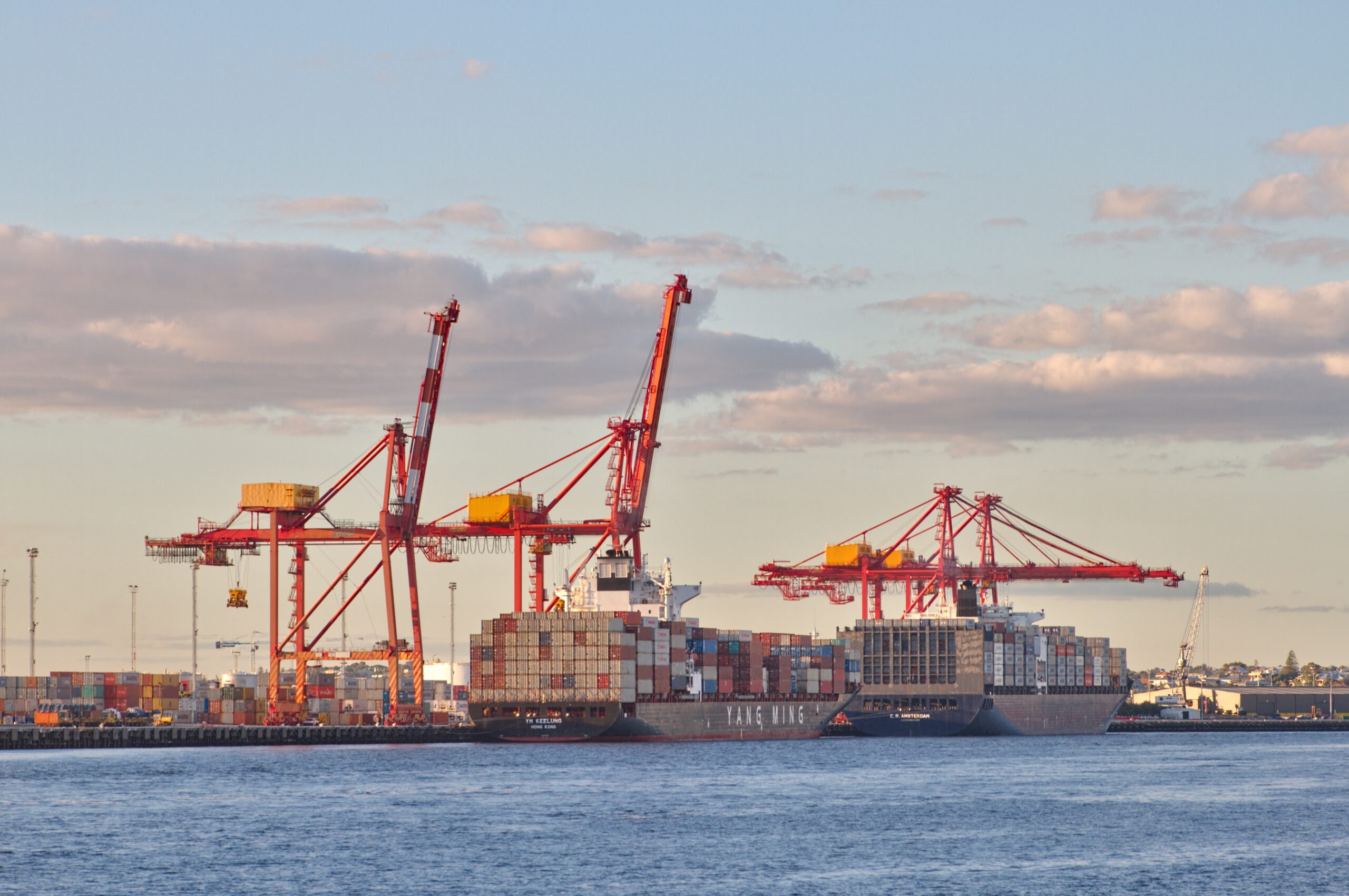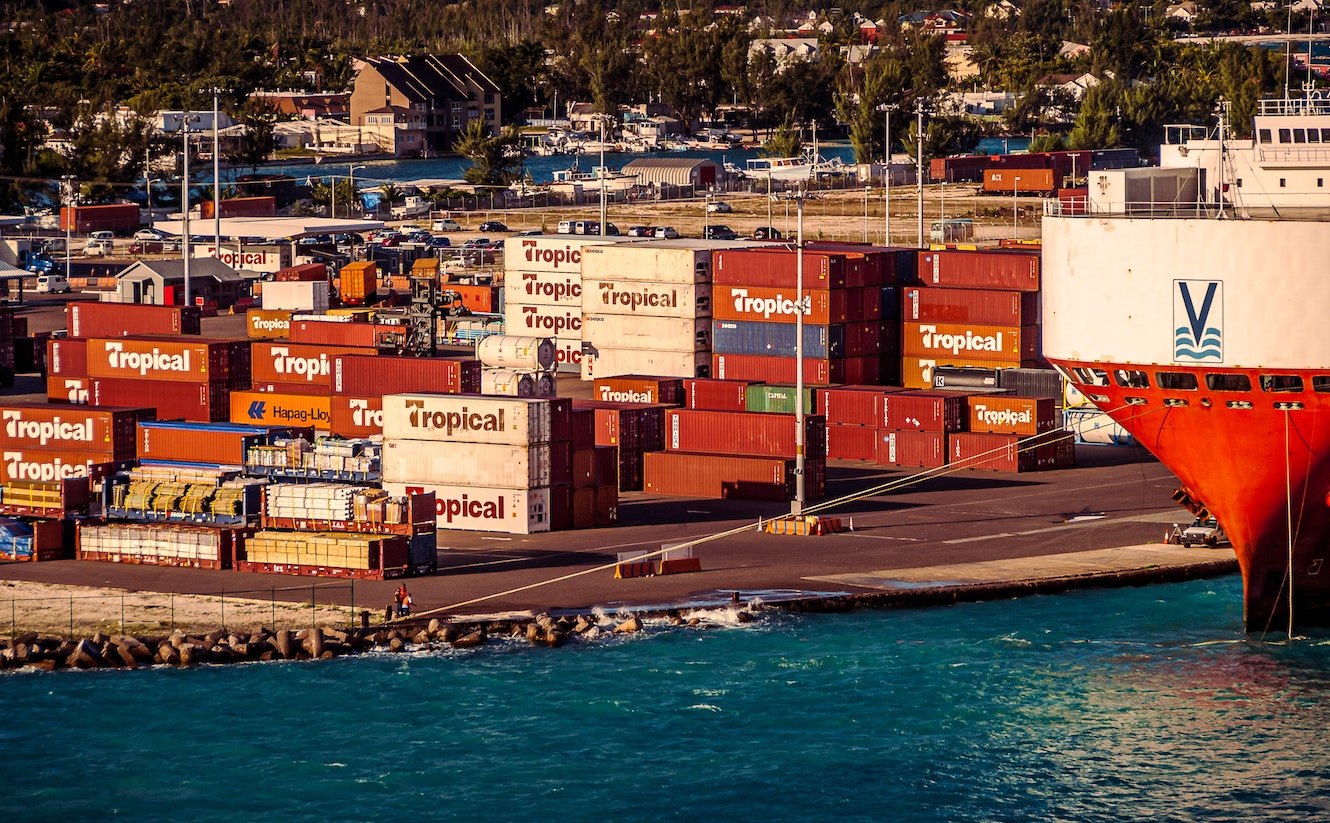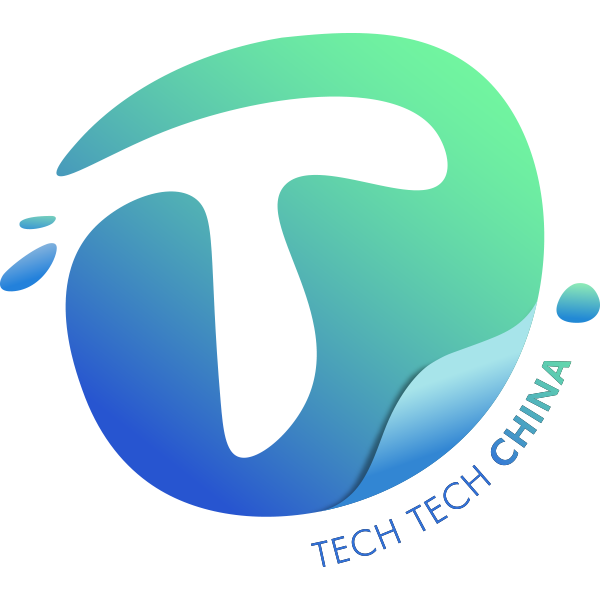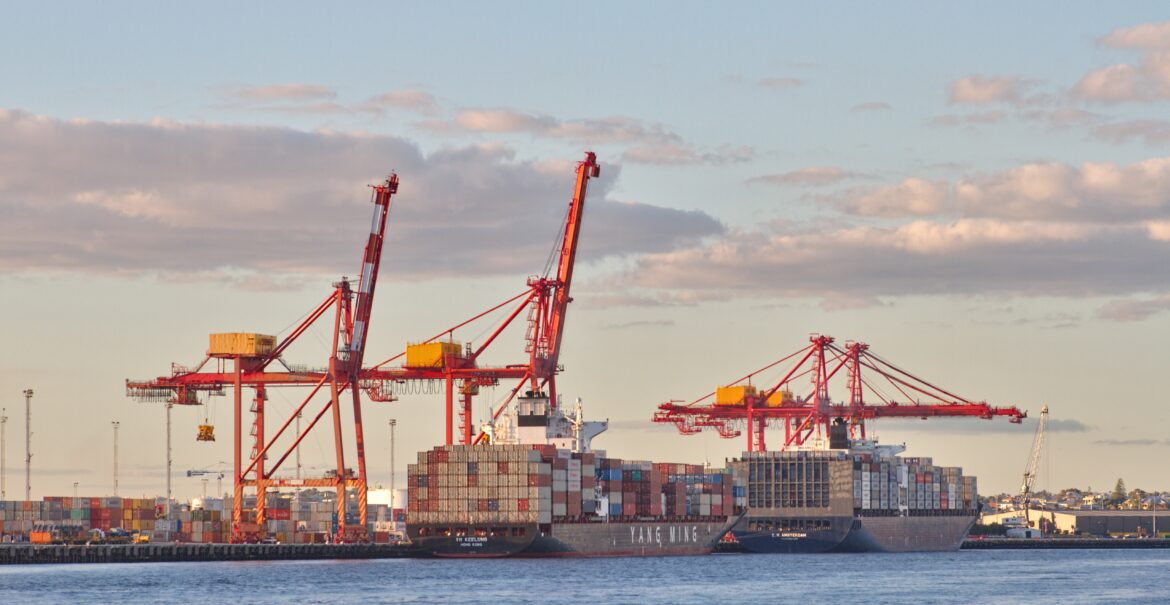What pops into your mind when thinking about China’s “real economy” as opposed to the internet economy, or the financial sector? Shoe factories? Home appliance makers? Airlines? Or shopping malls buzzing with customers?
To Hao Hongliang, a veteran supply chain manager in China’s eastern province of Jiangsu, few professions better embody China’s sprawling “real economy” sectors than the thousands of commodities buyers and sellers along the Yangtze River economic belt. Hao, the General Manager of Modern Supply Chain Science and Innovation Center in Zhangjiagang Bonded Zone, argues that bulk commodity dealers are a vital link and bellwether of the Chinese economy, although rarely noticed by the media or the general public. In a widely circulated article published in mid July on the official WeChat account of Tencent Cloud, titled “10,000 commodities traders no longer need to mortgage their houses (for bridge loans),” Hao pointed to a significant new trend in trade financing as a result of technology empowerment.
Below is Tech Tech China’s translation of Hao’s article.
***
By Hao Hongliang
The Yangtze River traverses 11 Chinese provinces and regions before flowing into the East China Sea. Its last major bend, in the eastern province of Jiangsu, turns into the Zhangjiagang Bay. Located at the unique confluence of the river and the sea, the Zhangjiagang Port handled 257 million tons of cargo in 2021. Some of the cargo unloaded here from international shipping is consumed nearby by factories along the Yangtze River, while some goes further west to major cities like Wuhan, Chongqing, and even reaches the remote western region of Xinjiang.
The trading of bulk commodities such as chemicals, textiles, grain, oil, and timber is particularly complex, because the upstream and downstream players have de-linked and contrasting demands. Mostly, the trading relationship is dominated by the raw material makers upstream, who require full payment, and offer no delivery. The factories downstream, on the other hand, want a billing period and the goods shipped to their door. There is a clear mismatch. What is to be done about it?
This is where commodity dealers come in: They go upstream to order commodities with full payment, organize delivery for buyers downstream while also giving them a billing period. China’s policy allows the dealers to suspend paying various import taxes and fees in bonded zones like the Zhangjiagang port. Dealers store commodities in bonded zones while biding their time to trade at better rates.
There are more than 10,000 such dealers in our bonded zone, their combined annual value of imported goods topping 500 billion yuan (~74 billion USD). Zhangjiagang has become the most important distribution center for bulk commodities in the Yangtze River basin, and a key economic pillar to the Yangtze River Delta. Working with the commodity dealers, we always hear them talk about their number one problem – financing.

Photo by Unsplash.
A Highly Risky Business that Makes Dealers Mortgage their Homes, All the Time
Commodity trading has two distinctive features: high price volatility and large transaction volume. Sellers thus demand speedy transaction. For example, if someone happens to be selling a batch of goods you want, you need to seal the deal, execute the contract and wire the money today, for any potential price hike tomorrow will lead to the buyer reneging on the deal and costing you dearly.
Another feature is the large volume of capital required. Traders of bulk commodities handle a relatively high value of goods. It is quite common to see a small trading company with a registered capital of 1 million RMB (~15 million USD) pull off several hundred million and even more than a billion in annual turnover.
Then how do trading companies get so much money in such a short period of time? It is very difficult. Even though banks are very open to “inclusive finance” these days, they are thousands of miles away from the commodity industries upstream and downstream. Their threshold for risk control is very high. Basically, banks can only rely on some large state-owned enterprises, and major listed companies to guarantee underwriting. They can’t do business with small or micro trading firms.
You can take the traditional financing route, which is to get loans using your credit and physical goods as collateral. Take, for example, Suzhou-based dealer Henglifan, whose trading volume in cotton reaches more than 1 billion yuan annually. Based on the company’s taxation and credit records from recent years, a bank may typically approve a credit loan of 1 million yuan, which hardly buys you a few tons of cotton. Unlike manufacturing businesses, a trading company has no land, factories, or equipment to put up as collateral. I have often seen trading company bosses mortgage their own homes for financing. Even so, it takes more than a month for all the paperwork to come through.
It means that while banks are willing to provide inclusive finance for micro, small, and medium enterprises, the business model of commodity trading makes it extremely difficult to get a loan under the current framework.
That is why I often say that the “last mile” of inclusive finance still lacks a “transformer”. As a service provider in the bonded zone, I have given a lot of thought to building such a “transformer” and solving this long-standing logjam.

Photo by Unsplash.
Digital Empowerment
In 2020, we partnered with Tencent Cloud and built a supply chain public service platform. In the meantime, we also worked with China Construction and Development (C&D) Supply Chain Co., Ltd. to help banks build up their confidence to lend money to small and micro trading enterprises.
How can the bank be assured? On the one hand, we introduced a company like C&D that meets the main credit requirements and has industry experience to “steer” the business – to ensure the authenticity of transactions while also maintaining control of the goods in trading. On the other hand, we let technology do its thing: we innovatively applied cloud computing, big data, blockchain, Internet of Things and other financial technologies in different scenarios of trade financing, bulk commodity tracing, big data risk control, electronic warehouse receipts and other specific scenarios. This way, we integrated all the information about online trading, funding, warehousing, and logistics, to eliminate the bank’s doubts.
For example, when a small and micro dealer with a registered capital of only 100,000 yuan applies for a credit line of 10 million yuan, a bank usually has three major concerns:
First, the authenticity of the financing behavior. Dealers say they want to buy coal to supply power plants downstream, but what if they put the money in the stock market the minute they get the loan?
Second, the authenticity of the goods. Warehouse receipts forgery remains a big problem in bulk commodity trading. Banks cannot practically check a trader’s warehouse every now and then to make sure the pile of coal is still there as claimed.
Third, the problem of ownership verification. Even with a physical cargo in place, banks can hardly be sure if it has been collaterized multiple times for multiple loans.
Banks have these doubts because the traditional trade financing model is unreliable and unintelligent – and that’s where digital technology comes in handy.
First, we replaced the traditional warehouse receipts with blockchain-based electronic warehouse receipts provided by Tencent Cloud. We then “relocated” all the delivery process, storage status and transaction contract of bulk commodities to the blockchain. Problem easily solved.
The most important feature of the blockchain is that it cannot be tampered with, which is perfect for guaranteeing the authenticity and uniqueness of data. We integrated all the data of logistics, capital flow, trade flow and information flow onto the chain, which can only be appended and not modified. Combined with surveillance camera footage from the warehouse and the use of AI algorithms to determine the destination of goods, we then got data from various sources to cross-verify the authenticity of electronic warehouse receipts. This is much more efficient and more accurate compared with all the due diligence and verification processes that banks had to do before. Moreover, various banks can access the same chain to avoid double pledging.
We also used digital technology to handle the risk control management of commodity price fluctuations. The system reads data for futures market settlement price at 3:30 p.m. every day to automatically determine whether each order needs to pay supplementary deposits. Again, another critical problem is solved in the supply chain financial services.
Once we finished building the whole platform, we recommended it to dealers in the bonded zone. At first, they were hesitant to try because they had to register on the platform and open accounts with banks. Later, word got around that a few companies got maximum credit lines of 10 million yuan via our platform, without a guarantee. And you can keep the credit line open until needed. Soon, many traders flocked to register with us.

Photo by Unsplash.
From Zero to One, Then A Hundred
In addition to solving the financing bottleneck, we are going to connect the commodity dealers in the bonded zone with the many internet platforms of the commodities industry this year.
This is truly a blue ocean. There are so many subdivisions inside the commodities sector. Taking chemicals as an example, there are Huarui Information Network that trades PTA (Purified Terephthalic Acid), Strait Petrochemical Trading Network for ethylene glycol, and countless other dealers that trade different chemicals. Each vertical category has their own version of “Taobao” and “JD.Com.” Just as consumer-oriented e-commerce players invariably expand into payment and logistics services to improve their customer “stickiness”, the same goes for the “2B” (business-facing) e-commerce platforms.
Take one of our partners, Yimiangou [which translates as “Easy Cotton Purchasing”]. The entire cotton industry involves a little than 5,000 legal persons, and virtually all of them are the trading company’s registered members. With so many companies on their platform, Yimiangou is well aware of the financing problems facing their clients. The cotton trading company certainly do not want to see their customers cancel deals because of insufficient funds. Our supply chain public service platform is working with them. The services we provide [using digital technology] can solve the financing problems for them.
Of all the 5,000 members of Yimiangou the cotton trading company, only about 300 companies are in our bonded zone. Through our cooperation, we can reach and serve more dealers outside this bonded zone. This year, we are going to focus on perfecting the cooperation model with Yimiangou, so we can replicate its success to more platforms.
The reason we approached Tencent Cloud for cooperation in the first place was that we learned Tencent had a strategy to enter the industrial Internet business. We would likely share a common goal with Tencent, we thought. Honestly, a tech company like Tencent is relatively far from the industry. When they first joined, they didn’t know much about cotton trading. But soon enough, they learned the industry and its business model, and quickly translated it in the language of technology and expressed it through technology. Tencent Cloud was able to develop a platform in two weeks that would otherwise have cost us months.

Cotton field. Photo by Unsplash.
In addition, Tencent Cloud’s experience in the financial industry has also benefited us a great deal. For example, some of our clients were not willing to go to the band and spend hours to open an account. Tencent Cloud reached out to the city–level branch of Bank of Shanghai, hoping to let customers open an account in 20 minutes on their phones. Since this product was launched by its headquarters, the branch bank in Zhangjiagang might not even know about it. So, Tencent Cloud truly saved us a lot of trouble in terms of technology and services.
In July 2021, Zhangjiagang City was named the first national model city of modern supply chain innovation and application, the only county-level city selected. Recently, I have also been asked where our motivation was to innovate the trading schemes in our bonded zone.
From a microeconomic perspective, I would say it is to serve the over 10,000 dealers in the bonded zone, and to attract more dealers to join our bonded zone. This is what we do, after all. On a grander scale, this is also benefitting the real economy.
When people talk about the real economy, they think of factories and manufacturers. Hardly do they think of dealers and supply chain.
In fact, millions of small and micro traders are like capillaries in the real economy network. Bridge this last mile [in financing], and the whole ecology thrives.




